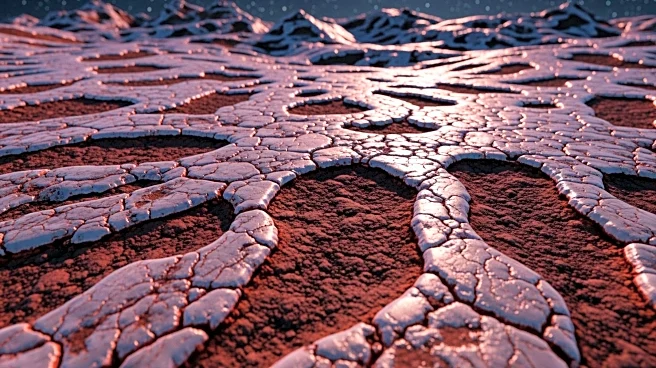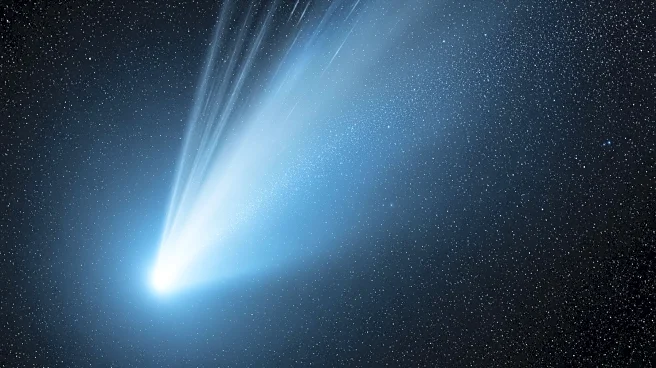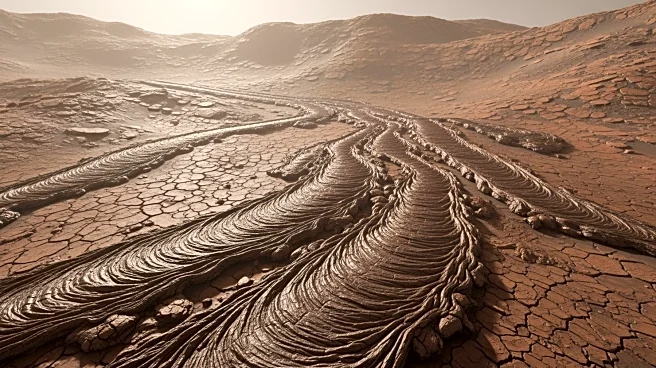What's Happening?
NASA's Curiosity rover has successfully drilled the 'Nevado Sajama' target on Mars, located on a ridge within the boxwork unit. The drilling was part of a broader campaign to study the geological features
of the area. The rover's instruments, including APXS, ChemCam, and MAHLI, provided data that confirmed the target's suitability for drilling. The analysis revealed fine veins in the bedrock, offering insights into the fluids that may have contributed to the erosion resistance of the boxwork ridges. The rover also collected environmental data, continuing its long-term study of Martian weather and atmospheric conditions.
Why It's Important?
The successful drilling at 'Nevado Sajama' is a critical step in understanding the geological history of Mars. The data collected will help scientists learn more about the planet's past environmental conditions, including the presence of water. This information is vital for assessing Mars' habitability and planning future missions. The campaign also highlights the technical capabilities of the Curiosity rover, which has been operational for over 13 years, providing valuable data for ongoing Mars research.
What's Next?
The next phase involves analyzing the drilled samples using the CheMin instrument. The results will be compared with previous samples from the 'Valle de la Luna' target to understand the mineralogical differences between the ridge and hollow. This analysis will help scientists piece together the history of the boxwork unit and its formation processes. The rover will continue to monitor environmental conditions, contributing to the long-term dataset on Martian weather.











